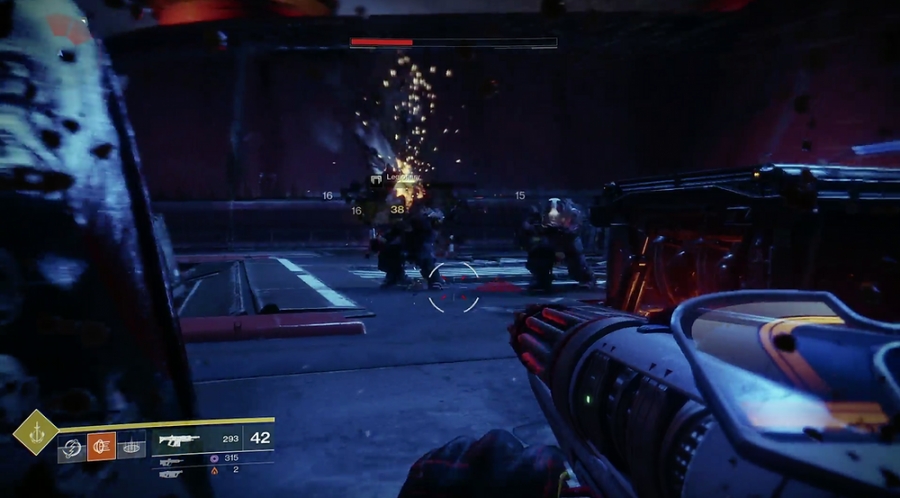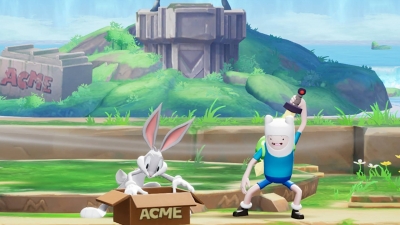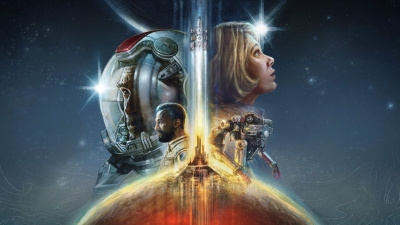Game UI design refers to the visual interface through which the user interacts with the game. This includes buttons, menus, navigation, and more. Good video game ui design means that the visuals are created in full compliance with the aesthetics of the game and all elements are placed in the right places without distracting from the gameplay.
Psychology plays an important part in understanding good game design. When looking to understand user psychology to design better product experiences, one of the richest sources of knowledge exists within the game design world.
The psychology of perception
Players perceive the game UI through their senses, including sight, hearing, touch, taste, and smell. Designers need to consider how players will perceive the UI in order to create a positive experience.
- Sight is the most important sense for players, as they use their eyes to see the UI and interact with it. Designers should use clear and concise text, and they should make sure that the UI is easy to read and understand. They should also use colors and fonts that are visually appealing and that help to create a sense of atmosphere.
- Hearing is less important for players, but it can still be used to create a more immersive experience. Designers can use sound effects to indicate important events, or they can use music to set the mood.
- Touch is not typically used in game UI design, but it can be used in some cases. For example, designers can use haptic feedback to give players a sense of touch when they interact with the UI.
- Taste and smell are not typically used in game UI design, but they could be used in some cases. For example, designers could use smells to create a sense of atmosphere, or they could use tastes to give players a sense of accomplishment when they complete a task.
Here are some specific tips for how designers can use the psychology of perception to create a more engaging game UI:
- Use clear and concise text. Players should be able to read and understand the UI without having to strain their eyes.
- Use colors and fonts that are visually appealing. The UI should be easy on the eyes and should help to create a sense of atmosphere.
- Use visual cues to draw attention to important information. For example, designers can use bright colors, bold fonts, or animations to draw players' attention to important information.
- Use sound effects to indicate important events. Sound effects can help to make the game more immersive and can help to indicate important events that players need to be aware of.
- Use music to set the mood. Music can help to create a sense of atmosphere and can help to set the tone for the game.
The psychology of attention
- Limit the amount of information on the screen. Players can only focus on a limited amount of information at a time, so it's important to only include the most important information on the screen at any given time.
- Make sure the information is easy to find. Players should be able to find the information they need quickly and easily. This means using clear and concise labels, and making sure that the information is organized in a logical way.
- Use visual cues to draw attention to important information. Visual cues can help to draw players' attention to important information. For example, you can use bright colors, bold fonts, or animations.
- Use negative space to create focus. Negative space is the area around objects in a design. By using negative space, you can create a sense of focus and make the important information stand out.
- Use contrast to create emphasis. Contrast can be used to make certain elements of a design stand out. For example, you can use a dark font on a light background to make the text easier to read.
- Use repetition to create familiarity. Repetition can help to create a sense of familiarity and make it easier for players to find the information they need. For example, you can use the same font and color scheme throughout the UI.
By following these tips, you can create a game UI that is more engaging and enjoyable for players.
Here are some additional tips that can help designers capture and maintain player attention:
- Use motion. Motion can be a great way to capture attention and keep players engaged. However, it's important to use motion sparingly and make sure that it's relevant to the game.
- Use sound. Sound can also be used to capture attention and keep players engaged. However, it's important to use sound sparingly and make sure that it's not too loud or distracting.
- Use rewards. Players are more likely to pay attention to information that is rewarding. This could include providing players with points, rewards, or other forms of positive reinforcement.
- Make it challenging. Players are more likely to pay attention to information that is challenging. This could include providing players with puzzles, challenges, or other obstacles to overcome.
- Make it fun. The most important thing is to make the game fun. If players are having fun, they'll be more likely to pay attention to the UI and interact with it.
The psychology of memory
- Use chunking. Chunking is a cognitive process that allows us to remember more information by grouping it together. For example, you can group items together by color, type, or function.
- Use mnemonic devices. Mnemonic devices are memory aids that can help us remember information. For example, you can use acronyms, rhymes, or visualizations to help you remember important information.
- Use repetition. Repetition is a powerful way to help us remember information. By repeating information over and over again, we can help it to sink into our long-term memory.
- Make it relevant. Information that is relevant to us is more likely to be remembered. When designing your UI, make sure that the information you include is relevant to the game and to the player's goals.
- Make it interesting. Information that is interesting is more likely to be remembered. When designing your UI, make sure that the information you include is interesting and engaging.
- Make it easy to access. Information that is easy to access is more likely to be remembered. When designing your UI, make sure that the information you include is easy to find and to use.
Here are some tips on how to avoid information overload:
- Only include the most important information. Players can only focus on a limited amount of information at a time, so it's important to only include the most important information on the screen at any given time.
- Use clear and concise labels. Players should be able to quickly and easily understand what each piece of information means.
- Organize the information in a logical way. Players should be able to easily find the information they need.
- Use visual cues to draw attention to important information. Visual cues can help to draw players' attention to important information. For example, you can use bright colors, bold fonts, or animations.
- Use negative space to create focus. Negative space is the area around objects in a design. By using negative space, you can create a sense of focus and make the important information stand out.
- Use contrast to create emphasis. Contrast can be used to make certain elements of a design stand out. For example, you can use a dark font on a light background to make the text easier to read.
- Use repetition to create familiarity. Repetition can help to create a sense of familiarity and make it easier for players to find the information they need. For example, you can use the same font and color scheme throughout the UI.
The psychology of motivation
- Provide challenges. Players are motivated by challenges. If the game is too easy, players will get bored. If the game is too hard, players will get frustrated. The challenge should be just right.
- Provide rewards. Players are motivated by rewards. Rewards can be anything from points to new levels to new items. Rewards give players a sense of accomplishment and make them want to keep playing.
- Provide a sense of progress. Players are motivated by a sense of progress. If players can see that they are making progress, they are more likely to keep playing. This can be done by providing a clear goal, tracking progress, and providing feedback.
- Make it fun. The most important thing is to make the game fun. If players are having fun, they'll be more likely to keep playing.
Here are some tips on how to avoid player frustration:
- Make the game fair. Players don't like to feel like they are being cheated. The game should be fair and balanced.
- Provide clear instructions. Players should know what they are supposed to do. If the instructions are unclear, players will get frustrated.
- Provide feedback. Players should know how they are doing. Feedback can be provided through scores, leaderboards, or other means.
- Allow players to save their progress. Players don't want to have to start over every time they die. Allow players to save their progress so they can pick up where they left off.
The bottom line
In conclusion, the psychology of game UI design is a complex and fascinating topic. By understanding how the human brain works, game designers can create interfaces that are both engaging and effective. Some of the key principles of game UI design include:
- Using clear and concise language: Players should be able to understand what each element of the UI does at a glance.
- Using visual cues: Visual cues can help players to quickly identify important information.
- Keeping the UI simple: A cluttered UI can be overwhelming and difficult to use.
- Making the UI responsive: Players should be able to interact with the UI without any lag or delay.
- Personalizing the UI: Players should be able to customize the UI to their own preferences.
By following these principles, game designers can create UIs that are both enjoyable and effective. This can lead to increased player engagement and satisfaction, which can ultimately lead to increased sales and profits.
In addition to the principles listed above, there are a number of other factors that can influence the psychology of game UI design. For example, the type of game, the target audience, and the overall aesthetic of the game all play a role in how the UI is perceived by players. It is important for game designers to consider all of these factors when designing a UI that will be both effective and engaging.






